Throwback Thursday is when we trawl through the That's archives for a work of dazzling genius written at some point in our past. We then republish it. On a Thursday.
By Monica Liau
In a back alley stretching off Panyu Lu, hemmed in by hulking high rises and a noisy middle school, sits a serene residence with fine architectural bones. Built in 1931 by pre-war Shanghai’s most pivotal architect, and lived in by him and his family, it had fallen into quiet abandonment. But today, the rafters hum under the toil of craftsmen gently undoing two decades of neglect, as a project is under way to turn the house into a museum celebrating the remarkable achievements of Laszlo Hudec.
For most, the history of the stately manor that will now be known as The Hudec House is only garnered through the anecdotal snippets and snatched memories of others. But for Alessa de Wet – Hudec’s only daughter and last remaining child – it represents nine years of her life.
Here to commemorate the 120th anniversary of her father’s birth, she is presiding over a ceremony held on an expanse of faded-olive concrete that covers what was once the 11-acre garden where she spent much of her young life mucking about in hand-me-down overalls.
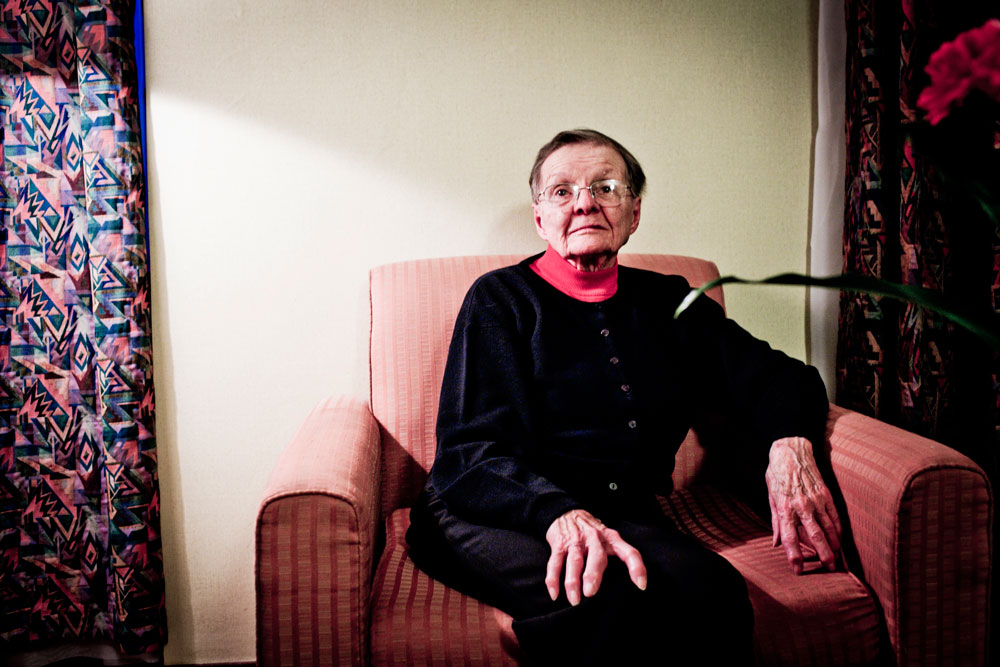
Alessa de Wet resting in her father's most famous work, the Park Hotel. Image by Nicky Almasy
Born in 1929, de Wet remembers that now-gone landscape as her whole world, one in which adults faded into the background. “I’ve always been fairly solitary,” she tells us back in her hotel room. “My brothers were three and five years older, so they went off to school and I got sent to play in the garden.”
As she gallivanted amongst the greenery, her father was entering his peak years of productivity, amassing a portfolio of more than 100 buildings in the city, transforming its architectural face in the process. It includes the one we are sitting in – the 22-story Art Deco Park Hotel overlooking People’s Square on Nanjing Lu that, built in 1934, reigned as the tallest in the city until the 1980s, and is generally considered Hudec’s masterpiece.
Her father’s journey to the city is equally as striking. Born in the Austro-Hungarian Empire in 1893, Hudec studied architecture at Budapest University before volunteering to join the army on the outbreak of WWI. Captured by the Russian Army in 1916, he was sent to a prison camp in Siberia. While in transit he jumped from a train near the Chinese border and made his way to Shanghai.
Hudec’s daughter remembers him as a very busy, very serious and very religious man – one who amassed more than 65 copies of the New Testament, each in a different language, to try to understand what Christ really wanted from people.
“He had an old-fashioned way of rearing children,” says de Wet. “Once, I was delighted to see my father and cried, ‘Hello Pops!’ Oh, was he angry. I got a lecture on respect and was told to never do that again. So I didn’t. I kept away.
“My brothers and I didn’t have a good relationship with any of the adults. They were the enemy. You avoided them like the plague.”
Also a distant figure in the house was her mother, Gisella Mayer Hudec. Born in Shanghai, de Wet remembers her half-German, half-British mother as a “spoiled beauty” who cared little for the city she grew up in.
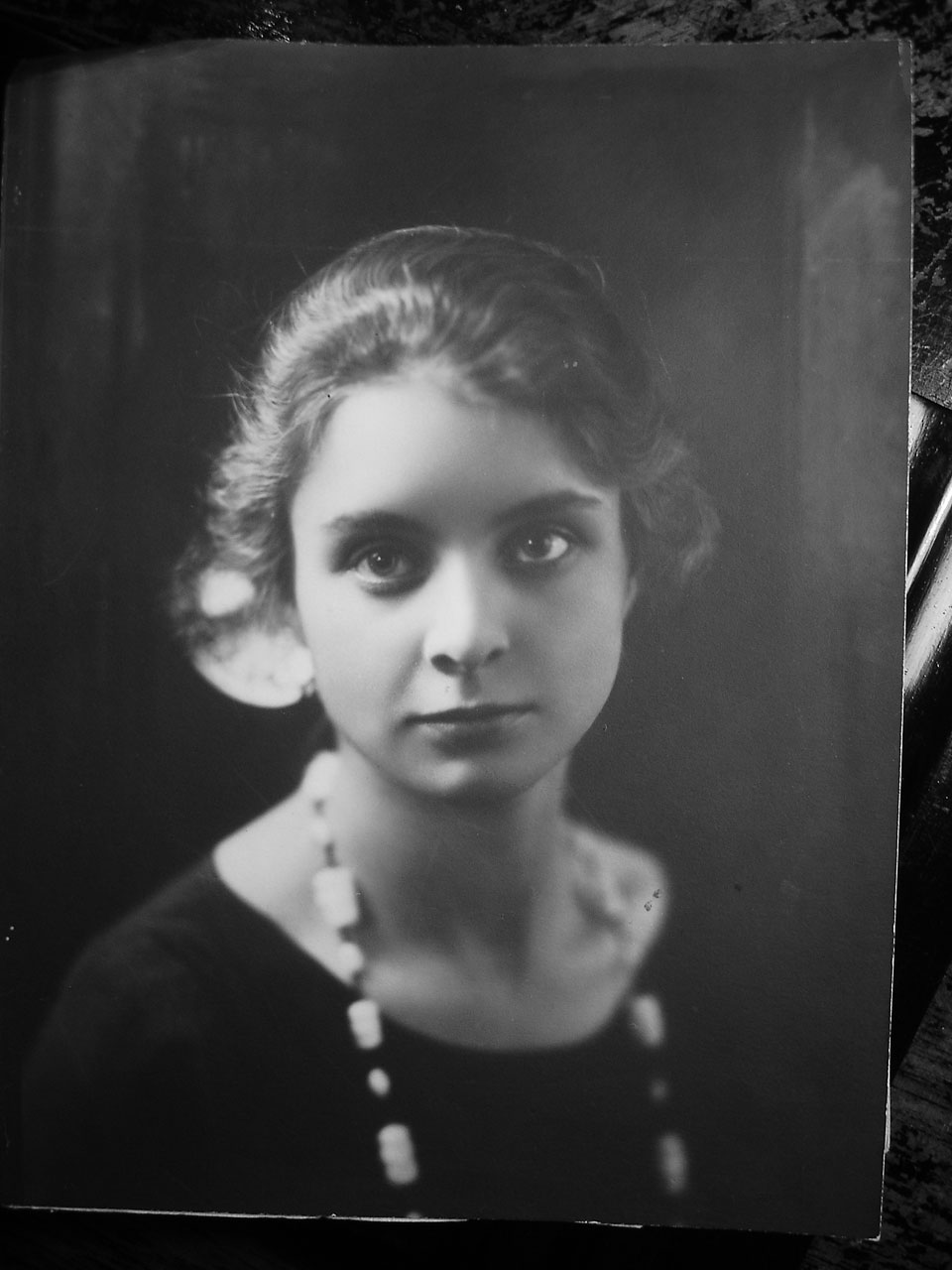
De Wet's mother, Gisella Mayer Hudec
“My mother was a flibbertigibbet, very irresponsible and fun-loving, while my father was frightfully rigid,” laughs de Wet. “He thought Shanghai was a very wicked place, so she was never allowed to go to balls or that sort of thing and found life deadly boring.”
Every two years, Gisella would get so fed up with this quiet existence that she’d ask her German merchant father for a ticket to Europe to visit her sister in Munich. De Wet was often taken along, experiencing long tours around the world, but missing a lot of school in the process.
While de Wet says her parents were very much in love, she also remembers the Hudec House as the place her parents first began to fight, the friction first arriving in the form of Hudec’s irresponsible brother Géza.
Expelled from university in Budapest and riddled with debt, the wild child was sent to Shanghai by his two sisters to take shelter beneath his older sibling’s wing. But after traveling to America to scope out architectural developments, Géza returned to Shanghai with a bad case of ileitis (the same disease that struck down President Eisenhower). No longer able to work or ride his beloved motorcycles, Géza was confined to the house under Gisella’s watchful care.
“They got awful chummy, the two of them, and my father became extremely, unreasonably jealous,” says de Wet. “My mother liberally baited him. She liked to be admired. Her mother was the same way, but my grandfather was sensible and liked that others admired his wife. My father did not. So he kicked Géza out.”
“My mother was a flibbertigibbet, very irresponsible and fun-loving, while my father was frightfully rigid. He thought Shanghai was a very wicked place, so she was never allowed to go to balls or that sort of thing and found life deadly boring.”
Without his brother’s support, Géza rented an apartment in the Chinese part of town. Between not eating properly and his return to physically punishing motocross, he soon died from an ileitis relapse.
“I don’t know if they ever reconciled, but from then on, it was always fight, fight, fight; hardly ever a dinner went by when someone wasn’t crying,” says de Wet. “I was only five years old, but you remember those things – and it never stopped. It went right on till I married and left.”
Away from the tensions at home, de Wet fondly recalls trips to her father’s office on the Bund, where she was often dropped off by her great-grandmother in a huge red car formerly owned by the Hardoons, one of Old Shanghai’s richest families. Hudec was a great art lover, and paintings by Giovanni Piranesi hung on the walls, alongside plans for the Park Hotel and Grand Theatre (de Wet says she still has numerous black and white art catalogues from galleries around the globe, in which her father has meticulously recorded each color in a painting alongside its photo).
READ MORE: A Look Back at Shanghai's Grand Cinema
His children, however, were happier downstairs, where her father’s partners Li Yun and Mr. Wang had their offices. “Now that was the nice part,” says de Wet. “They had all these samples in the storeroom that we were allowed to touch. Li Yun made us blocks with the leftover wood and we would use them to build castles... then run around shooting the thing to pieces.”
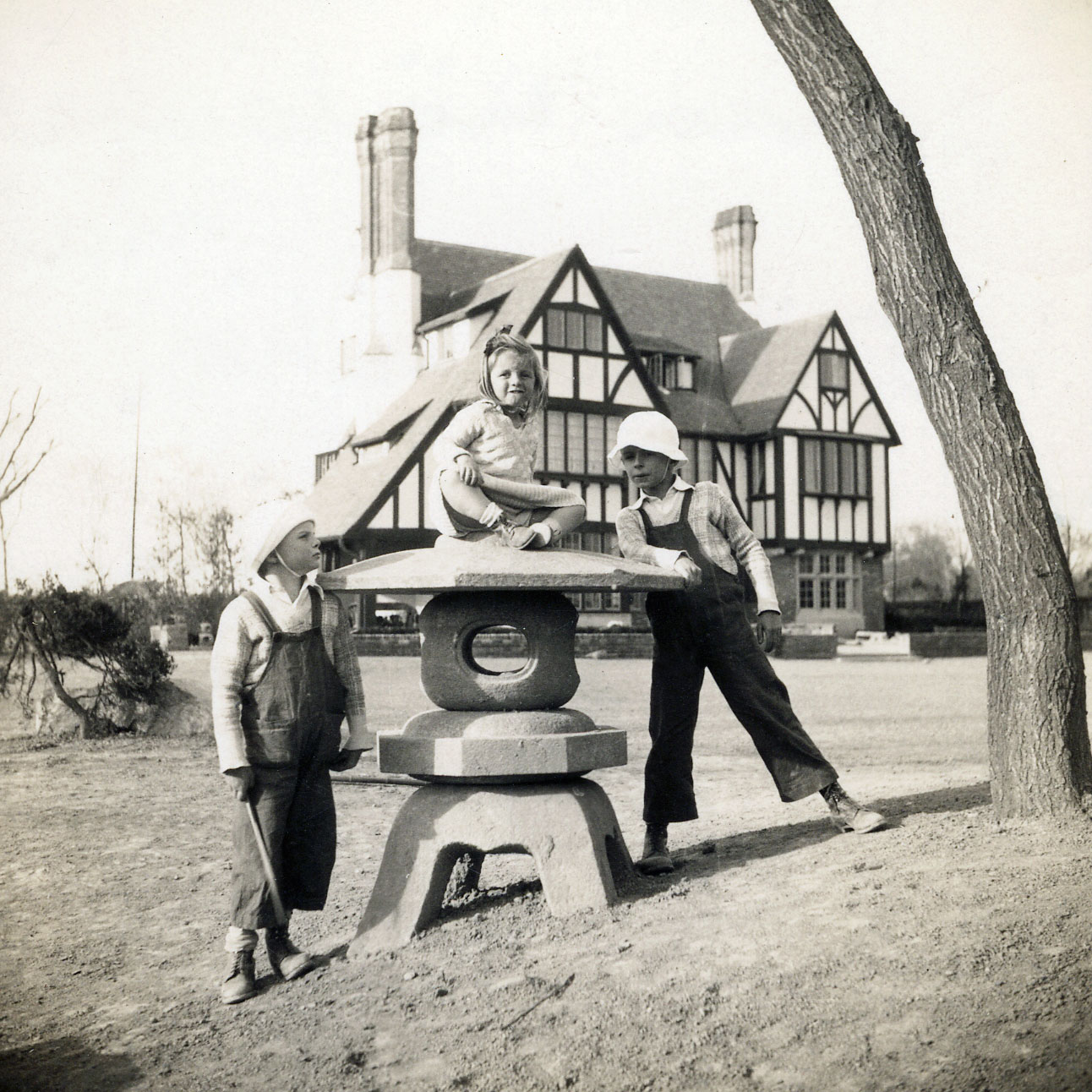
De Wet, center, with her brothers in front of the Hudec House, 1931. Courtesy of the Hudec Heritage Project
Hudec’s services may have been in high demand, but he and his family remained on the outskirts of Shanghai high society. While he was always published in re- spected journals, Hudec’s peers never failed to shun him.
“British architects didn’t like him at all because he was what they called a Hun,” says de Wet. “We never had anything to do with them. Ethnic communities did not mix.”
De Wet says some of the more highly-acclaimed architects of the time, like Frank Lloyd Wright, a contemporary who Hudec met with in Shanghai, irked her father to no end. “My father found Wright a lousy engineer and very arrogant,” de Wet scoffs. “The man blew his horn all the time and said how marvelous he was, but his buildings fell apart.”
Her father’s pariah status, however, made him very popular amongst rich Chinese clients. They preferred not to work with the British or Germans because they looked down on the Chinese and represented the colonial powers.
Yet by 1938, Hudec’s frenzied and genius building period was drawing to a close. The Japanese were controlling the city in earnest, bombings were a constant threat and fires raged. “I remember the terrible wailing when the Chinese funeral home out back went up in flames,” says de Wet. “A war is no time to be building things.”
Despite the upheavals, Hudec was loath to tear himself away from the city he was shaping. After a study trip around the world in 1938, he and his family returned on the last ship that would travel from Vancouver to Shanghai until the end of the war.
With both de Wet’s older brothers in boarding school and her grandparents having retired to Switzerland, Hudec moved to what she calls his “bachelor pad” at Hubertus Court, renting the Panyu Lu house to German Consul Dr. Fisher.
Though her father’s career waned and the world seethed, these years represent a time of excitement and adventure for de Wet. With the Japanese putting a stranglehold on the city, organized crime syndicates – who previously posed a serious kidnapping threat – were checked and car travel was cut back dramatically.
“British architects didn’t like him at all because he was what they called a Hun. Ethnic communities did not mix.”
It left de Wet free to explore the streets on the back of her bicycle, reveling in delicious freedom. With crystal-clear clarity, the octogenarian recalls tearing down Edinburgh Road (now Jiangsu Lu) and Avenue Haig (Huashan Lu) with her brothers, avoiding sweating rickshaw coolies. “They used to curse us terribly because we could pass them in traffic, yelling ‘Foreign devil!’ We’d screamed ‘Chinese devil!’ back at them from behind fences.”
Through her childhood eyes, she doesn’t recall her family being particularly frightened. Her father’s Hungarian passport protected them from the Japanese roundup and internment of Allied citizens. Even air raids, in her memory, were exciting.
“The first time they blew the siren, it was dogfights,” she says. “My brothers and I tore up to the ninth-floor roof to watch. The next morning we found all the shrapnel in the garden and my father said, ‘Never again!’”
Another time, de Wet was riding her bike home from school down Great Western Road (Yan’an Xi Lu) when sirens once again started to scream. “You were supposed to jump in these nasty concrete pipes that they had sunk into the sidewalk, but the damn things were full of water – who would ever want to get into that?”
Instead, the intrepid young de Wet slipped through the gates of a Chinese neighborhood. “I wandered around for ages and, suddenly, lo and behold I came out in the alley behind the square garden of Hubertus – so I threw my bicycle over the wall and I was home.”
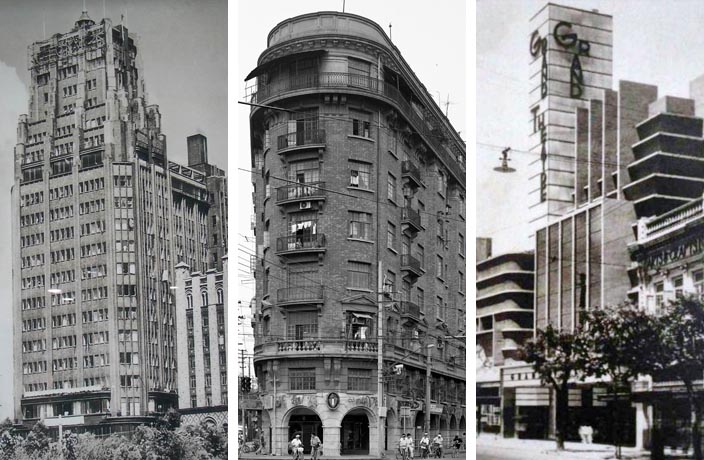
Three of Hudec's most famous Shanghai works: The Park Hotel (1934), The Normandie Apartments (1924) and the Grand Theatre (1933)
There were also long treks on horseback. De Wet took lessons from an old White Russian cavalry officer near Hongqiao, a present from her brother, who thought she spent too much time at home. So off she went, handing papers to the guard on her way through the Japanese checkpoint on the city perimeter and avoiding the Communist army bases hiding on the outskirts.
She was always told to ride in pairs... until the Portuguese Consul tried to seduce her. “Boy did I get mad!” she laughs. “I slapped his horse, which took off running, and I rode off in the other direction.”
Finally, in the late 1940s, Hudec too had to take his leave of the city. He was teaching classes in the University of California, Berkeley when Chiang Kai-Shek’s armies fell to the Communists, closing the Pearl of the Orient off for the next 30 years.
Their Panyu Lu residence became home to a Chinese merchant and three generations of his family and then a hospitality school, before eventually being left to go to seed.
Hudec, for his part, built nothing more than a Lutheran chapel on the Berkeley campus after his departure from the Middle Kingdom. He also became very involved in archaeology, frequent trips to Rome sparking rumors he was involved in the search for Saint Peter’s ashes.
On October 26, 1958, Hudec was taken suddenly by a heart attack in Berkeley at age 65. De Wet was half-way around the world in South Africa, having dropped out of college to wed the love of her life. Hudec’s brilliant and technologically-advanced achievements faded into history for all but the most architecturally aware.
“As a child, even I knew my father was most unusual,” de Wet reflects. “I think he was always a little hurt that people didn’t seem to realize all he had achieved.”
But two kids, three countries, four states and a 58-year marriage later, de Wet has seen her father’s star rising once again.
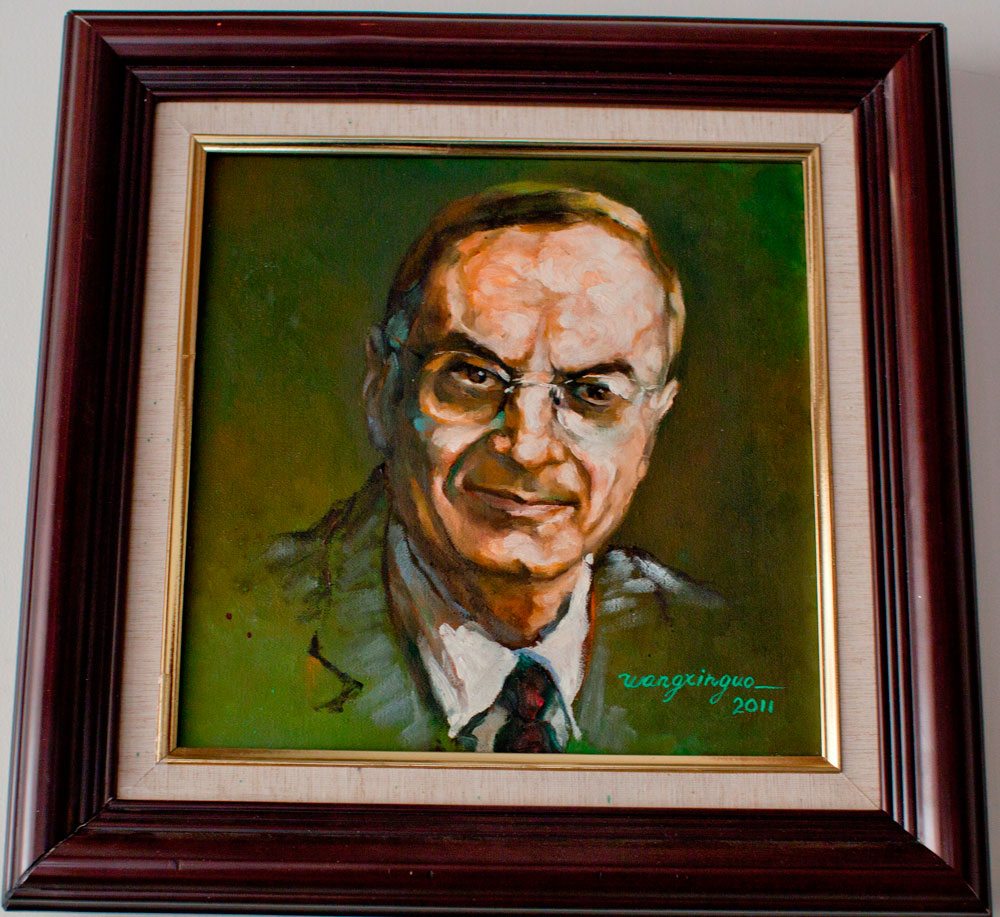
A painting of Lazlo Hudec in The Hudec House
It began in 2008, when the Hungarian Embassy held the Year of Hudec in Shanghai – 12 months of walks, seminars and workshops that sought to shine light on Hudec’s monuments in commemoration of the 50th anniversary of his death.
The rebirth is also thanks to the 2008 founding of the Hudec Heritage Project by the great man’s niece and collector of his archives, Hungarian Virag Csejdy. Around the same time, and in partnership with Csejdy, Hungarian-American Reka Pigniczky began making a documentary, The Life of Laszlo Hudec, which premiered in 2010 and will be a permanent exhibition at The Hudec House.
“My father found Frank Lloyd Wright a lousy engineer and very arrogant. The man blew his horn all the time and said how marvelous he was, but his buildings fell apart.”
In partnership with the Changning government and the Dajun Property Development Company, who are in on The Hudec House project, Csejdy and Pigniczky have been the main drivers in securing Hudec’s legacy. While approximately 65 of his buildings can still be seen around Shanghai today, the house marks the first permanent exhibition paying homage to his life and work.
“Currently, we have no control over what happens with this building or any of them,” says Csejdy. “But my goal in the future is to be more involved in what’s happening to these old buildings, to know who is taking care of them and understand what their future might be.”
De Wet, for her part, is just glad her father is finally getting his dues. After a series of speeches commemorating her father’s work at the ceremony, throngs of well-wishers surround her and clamor for her autograph, seeing her as the last link to a man who helped shape Shanghai’s soul. She obliges for a full hour, writing her name in slow and deliberate script.
“For an ornery housewife, all this attention and activity was not quite my cup of tea,” she laughs. “But I did it for my father... he deserves this.”
Find Hudec’s Shanghai house at 129 Panyu Lu, by Pingwu Lu 番禺路129号, 近平武路. For more information visit www.hudec.cn.
This article first appeared in the February 2013 issue of That's Shanghai. To see more Throwback Thursday posts, click here.




















0 User Comments